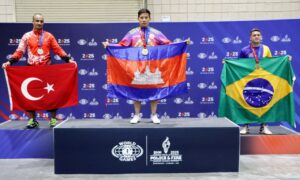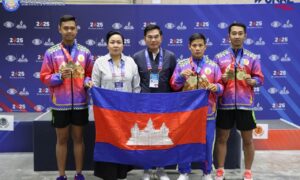Minority non secular communities also encountered issue in obtaining permits for new church buildings and mosques. The Catholic Church continued to hunt permission, first solicited in 2000, to build a brand new church in the Sarajevo neighborhood of Grbavica, however complained that the local authorities, a Bosniak majority, refused to grant the allow. In May 2007 the Islamic neighborhood began proceedings in opposition beautiful bosnian women to the RS metropolis of Banja Luka looking for damages of approximately $1.1 million (1.5 million Bosnian convertible marks) for the wartime destruction of all mosques in the city. The Islamic neighborhood filed the original lawsuit in 2000 however began proceedings once more when an out-of-courtroom settlement failed because the town would not make the requested request for forgiveness.
The Armed Forces of Bosnia and Herzegovina (OSBiH) were unified into a single entity in 2005, with the merger of the Army of the Federation of Bosnia and Herzegovina and the Army of Republika Srpska, which had defended their respective areas. However, the highest political authority within the nation is the High Representative in Bosnia and Herzegovina, the chief government officer for the international civilian presence in the country and is selected by the European Union. Since 1995, the High Representative has been able to bypass the elected parliamentary meeting, and since 1997 has been capable of take away elected officers. The methods chosen by the High Representative have been criticized as undemocratic.

Early history
A variety of illegally constructed non secular objects continued to trigger ethnic/non secular pressure and conflict in varied communities. Bosnia and Herzegovina gender profile Archived on the Wayback Machine, IFAD, 5 March 2007. Women suffered mass sexual violence and sexual servitude through the Bosnian War, and the Bosnian genocide, when violence assumed a gender-focused type by way of using rape. Estimates of the total variety of women raped in the course of the war vary from 12,000 to 50,000.
Differences between Bosnian, Croatian and Serbian

Since the mid-1800s, Serbia has produced numerous well-known painters who’re representative of general European artistic developments. One of the most distinguished of these was Paja Jovanović, who painted large canvases on historic themes such because the Migration of the Serbs . Painter Uroš Predić was additionally outstanding in the area of Serbian artwork, portray the Kosovo Maiden and Happy Brothers. While Jovanović and Predić had been each realist painters, artist Nadežda Petrović was an impressionist and fauvist and Sava Šumanović was an completed Cubist.
Bosnia or most of its current-day areas have been ruled by Vlastimirovic, Vojislavljevic, Nemanjic, and Kotromanic dynasties. Prince Petar (r. 892–917), defeated Tišemir in Bosnia, annexing the valley of Bosna. Petar took over the Neretva, after which he appears to have come into battle with Michael, a Bulgarian vassal ruling Zahumlje (with Travunia and Duklja).
Kingdom of Serbs, Croats and Slovenes
The Ottomans imported their feudal system to Bosnia shortly after the take-over, and estates were granted to men referred to as sipahis, in return for army service in times of struggle. At the beginning of the Ottoman interval, these estates had been usually, but not exclusively, granted to Muslims, and later solely to Muslims. In Bosnia, these land grants progressively grew to become hereditary, and by the tip of the Ottoman interval, a majority of the landowners in Bosnia had been Muslims, and most Christians were peasants or serfs Serbs. At its largest extent, beneath King Tvrtko I, the Bosnian Kingdom included most of current-day Bosnia and Herzegovina, excluding north-western Bosnia, in addition to components of Dalmatia ,western Serbia and Montenegro.
He is famend for his contributions to the self-discipline of electrical energy and magnetism within the late nineteenth and early 20th century. The first Serb authors who appeared after World War II were Mihailo Lalić and Dobrica Ćosić.
Police forces in addition to entity and native governments regularly allowed or encouraged an environment by which violations of spiritual freedom may take place. In some instances the reluctance of police and prosecutors to aggressively investigate and prosecute crimes in opposition to spiritual minorities remained a serious impediment to safeguarding the rights of spiritual minorities. The appropriation of non secular symbols and buildings for political functions together with restrictions on non secular providers and ceremonies had a unfavorable influence on inter-religious dialogue and inter-ethnic relations in many communities.
The non secular state of affairs was also peculiar because of the presence of an indigenous Bosnian Church (its adherents were often known as krstjani, “Christians”). The krštjani had been considered heretics by each the Roman Catholic Church and the Orthodox Church.
The Serb side accepted the proposed ethnic cantonization of Bosnia and Herzegovina (the Carrington-Cutileiro peace plan), as did the Bosniak and Bosnian Croat sides in Lisbon in 1992, within the hope that warfare wouldn’t escape. The Bosniak political leadership underneath President Alija Izetbegović of Bosnia and Herzegovina subsequently revoked the settlement refusing to decentralize the newly created nation based mostly on ethnic lines. Among the Serb population, the warfare is known as the “Defensive Fatherland War”.











